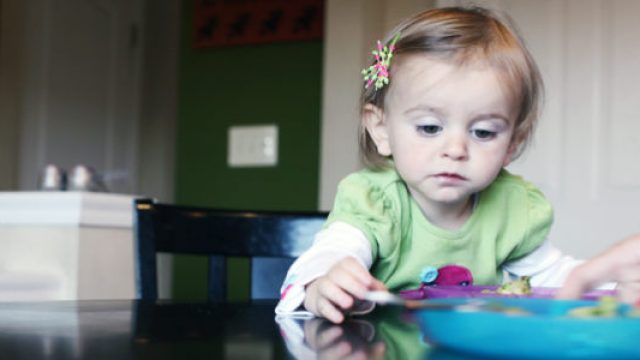Here at AV Children and Multispeciality Clinic we understand that trying to soothe a teething baby,
brushing a toddler’s teeth, and managing dental hygiene in children of all ages can be difficult. Best Pediatrician in Pune, With this
in mind, this newsletter will discuss everything you need to know about teething, from signs and
symptoms to stages and treatments. This also includes information for teething toddlers and good
hygiene practices for when those pearly whites have finally arrived!
Please share this newsletter with someone who might benefit from our updates. Our goal is to
provide practical and valuable advice to all families. By sharing, we can improve and grow the
information we provide. Please also follow and like us on Facebook and Instagram. Your support
and feedback are greatly appreciated and used to help us improve these updates. Are there any
topics or questions you would like this newsletter to cover? Please
email drcvphadnis@gmail.comand we will aim to include this in the next update.
• When do babies start teething?
• Signs of teething
• Stages of teething for babies and toddlers
• How long does teething last?
• Looking after your baby’s and toddler’s teeth
• How to soothe a teething baby
• What are some good dental hygiene practices?
• How to reach us
When do babies start teething?
The teething process begins at a different time for every baby, and some babies may commence
teething earlier than others. This is normal – and nothing to worry about, so try not to compare
your baby’s teething journey with others. It may surprise you to know that some babies are born
with teeth. Some babies will start teething at four months, others may take 12 months. However,
the majority of babies will start teething at around six months.
What are the signs of teething?
If you are unsure whether your baby is teething, there are a few signs and symptoms that you
should look out for:
• Sore/red gums
• A rash develops on the face
• Trouble sleeping
• Dribbling more than usual
• One flushed cheek
• Regularly chewing on things
• Rubbing their ear
Please note that not all babies will experience these symptoms. Sometimes baby teeth can
develop without pain or discomfort…if this is your baby…breathe a sigh of relief!
There are a few common misconceptions surrounding teething. Firstly, teething does not cause a fever.
However, it can slightly raise your baby’s temperature. If your baby has a high temperature – and you
are concerned, always seek medical advice from your pediatrician, like our team members at AV
Children and Multispeciality Clinic. Some parents also believe that teething can cause diarrhoea. This is
another common misconception.
Stages of teething for babies and toddlers
Teething is a long process. We understand that it can be difficult for both the child and the
parent. However, we believe that understanding each stage of the teething process can help you
know what to expect. So, you can ease your child’s discomfort – and your own. Let’s discuss the
five different stages of teething below:
Stage 1: (0-6 months) All babies are born with a complete set of 20 primary teeth. These are
located in the jawbones beneath their gums.
Stage 2: (6-8 months) The first teeth emerge. These are the upper and lower incisors (front
teeth). Slight pain and discomfort may start to occur prior to this. You will notice that your baby
will enjoy chewing on toys to alleviate pain.
Stage 3: (10-14 months) The primary molars begin to erupt in the back of the mouth in the upper
and lower jaws. During this stage, you will notice your baby drools more than usual. Their sleep
schedule may also be more disruptive. Help ease their discomfort by giving them something to
chew on, like a teething ring.
Stage 4: (16-22 months) Canine teeth will grow. These are located between the incisors and
molars on the top and bottom. Try to keep your baby comfortable by allowing them to chew on
toys.
Stage 5: (25-33 months) The final stage. During this time, large molars will erupt. These are the
biggest teeth and often the most painful. You may find that your usual soothing techniques no
longer work. Try alternative methods like allowing your child to chew on hard vegetables.
How long does teething last?
Waiting for your baby’s first teeth to develop can be an exciting – yet daunting – time for most
parents. Be aware that the teething process does take a long time. Most babies will begin teething
around six months and can continue until they are 33 months old. Even after this time, the
teething process is not entirely over until your child develops permanent molars. This usually
happens around 6-7 years of age. Again, be aware that all babies are different. Some will develop
teeth quicker than others.
Looking after your baby’s and toddler’s teeth
Oral hygiene is crucial for your child’s health, so get a head start by brushing your baby’s teeth
as soon as they start to appear. Use fluoride toothpaste and a baby toothbrush to clean your
child’s teeth carefully. As time goes on, gradually start brushing your child’s teeth more
thoroughly. A tiny smear of toothpaste is recommended for babies and toddlers up to 3 years old.
For 3-6 years, use a pea-sized amount.
It’s fine if you cannot brush your teeth for the recommended two minutes at first. It’s just
important to just get them used to brush their teeth as part of a routine. It’s recommended that
you brush their teeth at least twice a day, preferably in the morning and before bedtime. Try to
incorporate brushing their teeth into your teeth brushing schedule. This will help set a good
example as your child will see you brushing your own teeth on a daily basis.
It’s also important to ensure your child gets regular check-ups at the dentist, just to make sure
their teeth are healthy and growing proportionately. You can take your child with you to your
own dental check-ups so they get used to visiting the dentist.
How to soothe a teething baby
It can be difficult to soothe your teething baby. Seeing them in discomfort can be distressing.
Luckily, there are plenty of treatments out there that can help. Teething toys are helpful aids as
you can put them in the fridge before giving them to your baby. This gives them something safe
and cool to chew on, which will help them feel more at ease. Cool water, a cold dummy, and
teething gels can also support your child. Teething gels contain a mild local anesthetic. They are
safe for your baby to use and can provide a cooling sensation on your baby’s gums.
If you would like to gain some more advice on how to soothe a teething baby, don’t hesitate to
contact AV Children and Multispeciality Clinic via our website.
What are some good dental hygiene practices?
Regardless of your child’s age, helping them to keep on top of their dental hygiene and
establishing a good routine is a vital part of their health. Some of our top tips include:
• Routine: Make sure that you brush twice a day for two minutes at a time – not forgetting
to brush your tongue and gums to help get rid of any lingering bacteria!
• Technique: Hold your brush at a 45 degree angle to your teeth, using back and forth and
up and down motions to cover every surface of each of your teeth. Don’t forget those
molars at the back!
• Checkups: Don’t forget to get regular checkups, in order to spot issues before they have
the chance to evolve.
• Diet: A good diet does wonders for your health, and oral health is included. A healthy,
balanced diet with plenty of calcium-rich foods including broccoli, eggs, cheese and milk
can contribute to keeping teeth strong.
• Avoid sugary drinks and sweets: This one goes hand-in-hand with a good diet – avoiding
sugary foods and drinks that coat the teeth and help harbour bacteria will really help to
improve oral hygiene.
If you would more advice, don’t hesitate to contact AV Children and Multispeciality Clinic via our
website.





